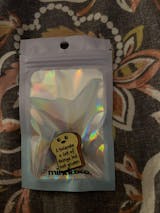Stim or Fidget? The Ultimate Guide to Picking the Right Tool for You
When it comes to managing sensory needs, improving focus, or calming anxious minds, the world of toys and tools can be a little overwhelming. The terms “stim toys” and “fidget toys” are often used interchangeably, but they actually serve distinct purposes. In this guide, we’ll break down the differences and help you decide which one—or both—might be the right fit for you.
What Are Stim Toys?
Stim toys (short for “self-stimulatory” toys) are specifically designed to meet sensory needs. For neurodivergent individuals, such as those with ADHD or autism, stimming is a natural way to regulate emotions, manage sensory input, or release excess energy.
Common Characteristics of Stim Toys:
- Tactile or Visual Stimulation: Think squishy textures, bright colors, or satisfying motions.
- Purposeful Design: These toys often cater to sensory-seeking behaviors, like squeezing, twisting, or watching fluid movements.
- Emotional Regulation: They can provide comfort or distraction during times of stress or sensory overload.
Examples of Stim Toys:
- Liquid motion timers
- Sensory worry stones
- Stim chews or stretchy bands
What Are Fidget Toys?
Fidget toys, on the other hand, are more focused on maintaining focus and reducing restlessness. They’re perfect for anyone—neurodivergent or neurotypical—who finds themselves tapping a pencil, clicking a pen, or bouncing their leg during meetings or classes.
Common Characteristics of Fidget Toys:
- Compact and Portable: Easy to keep in your pocket, bag, or desk.
- Quiet Functionality: Designed to provide movement without distracting others.
- Focus Enhancement: Helps channel restless energy to improve attention.
Examples of Fidget Toys:
- Fidget spinners and cubes
- Tangle toys
- Small palm-sized items
Key Differences Between Stim and Fidget Toys
While they’re different, the overlap between these tools is significant. A single product can often serve as both a stim and fidget toy, depending on how it’s used.
Finding the Right Tool/Toy for You
Choosing between stim and fidget toys ultimately depends on your personal needs. Here are some guiding questions:
- Do you often feel overwhelmed by sensory input? Stim toys might help you regulate.
- Do you struggle with focus during work or study? Fidget toys could be the answer.
- Are you seeking tools for both purposes? Dual-use products like MindCoco’s CocoPuffy plushie or sensory worry stones could provide the best of both worlds.
Why It Matters
Understanding the differences between these tools can empower you to better meet your sensory and focus needs. Whether you’re neurodivergent or just looking for ways to manage day-to-day stress, the right toy can make a world of difference. Plus, embracing these tools helps normalize their use, fostering a more inclusive environment for everyone.
After all, every mind deserves to be celebrated. 🎉




0 comments